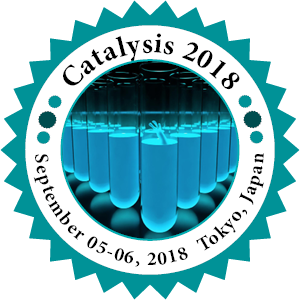
Tiefeng Xu
Zhejiang Sci-Tech University, China
Title: Visible-light-assisted peroxymonosulfate activation and novel mechanism for degradation of contaminants over g-C3N4 coordinating with iron (II) phthalocyanine catalyst
Biography
Biography: Tiefeng Xu
Abstract
Recently, peroxymonosulfate (PMS)-based advanced oxidation processes (AOPs) have received increasing attention because of their capability and adaptability in decontamination. The couple of solar light and PMS activation is an environmentally friendly and efficient strategy for environmental remediation. Herein, the iron hexadecachlorophthalocyanine (FePcCl16) was used to coordinate with graphitic carbon nitride (g-C3N4), which was functionalized by pyridine-based ligand isonicotinic acid (INA) to prepare a distinctive catalyst, g-C3N4-INA-FePcCl16. The experimental results revealed that g-C3N4-INA-FePcCl16 can activate PMS efficiently for the elimination of carbamazepine (CBZ) under visible light irradiation over a wide pH range. Upon irradiation with visible light, CBZ was destroyed by the solider g-C3N4 with generated sulfate (SO4•−) and hydroxyl (•OH) radicals, on the other hand, high-valent iron (Fe (IV)=O) species accompanied by SO4•− and •OH radicals were produced by excited-state FePcCl16 (*FePcCl16) during oxidation, which is different from a traditional PMS activation system. The axial pyridine-based ligand was protected under the FePcCl16 macrocyclic structure shield. Noteworthy, in the absence of visible light, g-C3N4-INA-FePcCl16 showed a higher catalytic performance than pure g-C3N4, FePcCl16 and a mechanical mixture of the two. This study allows for the construction of an effective and environmental catalytic system, which can be applied to purify water that contains refractory pollutants.

